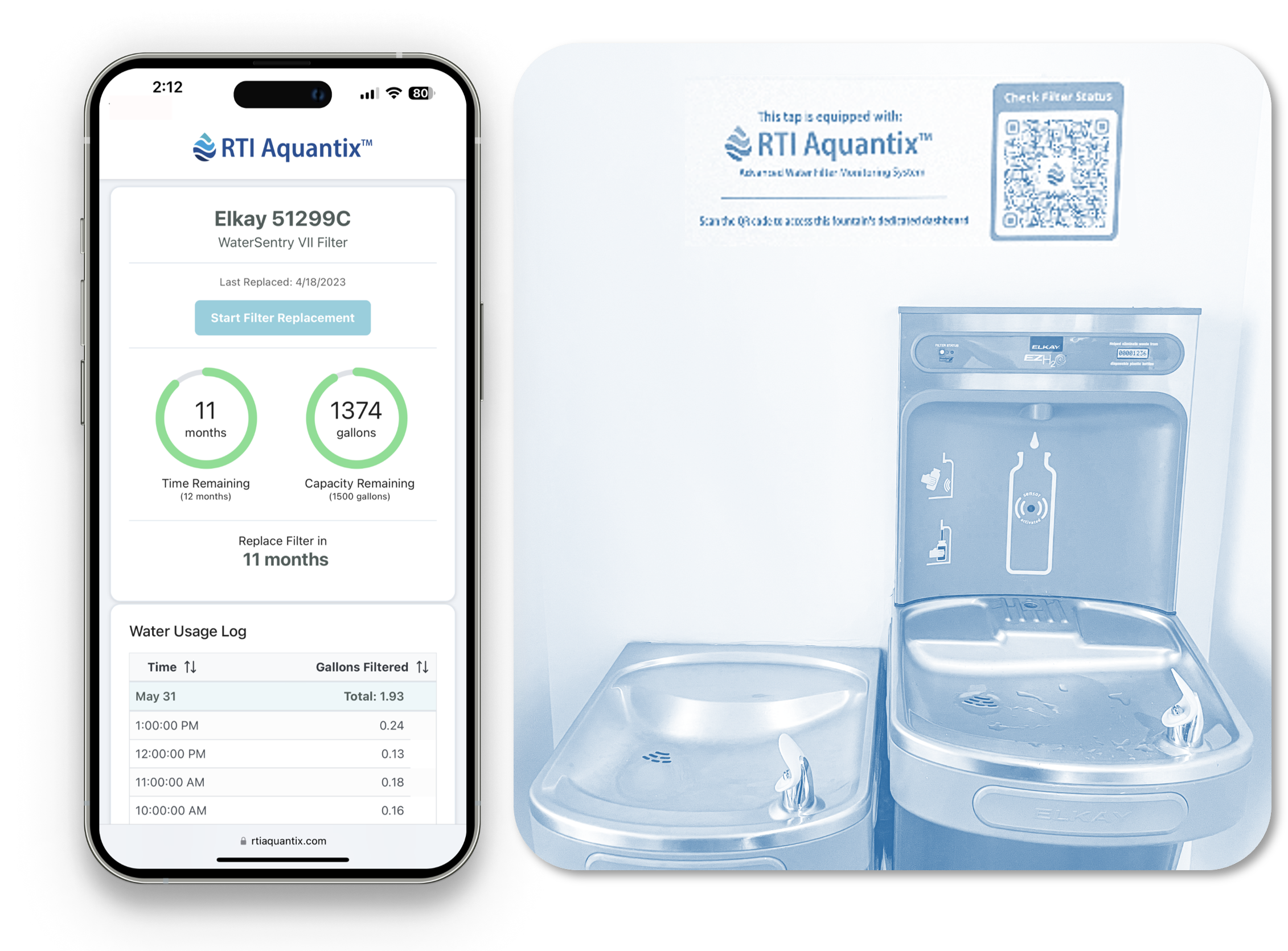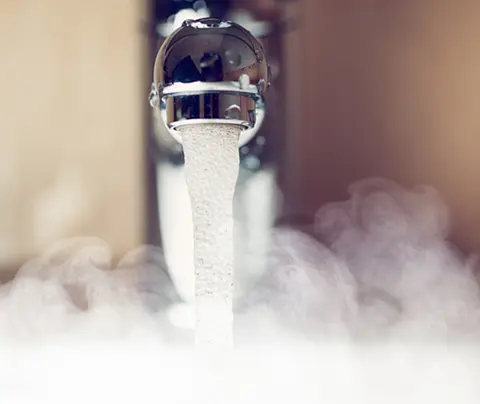RTI Aquantix™ monitors real-time water use and alerts facility staff when filters need replacement
RESEARCH TRIANGLE PARK, N.C. — Experts in water treatment and public health at RTI International, a nonprofit research institute, have developed a new system to improve maintenance of drinking water quality in large buildings and campuses. The software, called RTI Aquantix™, monitors real-time water use from filtered taps throughout a building and alerts staff when water filters need to be changed to ensure safe and consistent water quality.
“Many people don’t realize that point-of-use filters, while they can be great for dealing with contaminants such as lead, need to be maintained appropriately if they are going to be considered a long-term water quality solution,” said Riley Mulhern, Ph.D., a research environmental engineer at RTI and one of the lead innovators on the project. “My dream is to be able to go up to any drinking water tap or fountain in any school, university, office building, hospital or airport and know that the water from that tap is safely managed.”
The patent-pending system tracks water use at each location through cloud-connected sensors and compiles the data into a centralized monitoring dashboard. The software automatically records replacements over time to make filter maintenance more transparent, accountable and effective.

Image: A screenshot of the RTI Aquantix™ mobile interface and water fountains with RTI Aquantix™ signage, including a QR code for checking the filter status
“It takes a lot of effort to manually check all the filters across a large campus,” said Don Teasley, maintenance supervisor at RTI. “Knowing which filters are reaching capacity sooner in real time and automating our maintenance efforts makes my team more efficient while ensuring the safest possible drinking water for everyone.”
Researchers partnered with facilities and maintenance staff at RTI to test the system on water fountains across the institute’s campus in Research Triangle Park, North Carolina. RTI Aquantix sensors are currently monitoring water fountains and bottle fillers in five buildings. The status of these point-of-use filters is publicly available by scanning a QR code located above each tap.
“RTI Aquantix helps maintenance and operations staff optimize filter management to both protect health and reduce costs,” said Judd Larson, Ph.D., a research chemical engineer at RTI, who is also leading the project. “While some point-of-use filters have status indicators noting when they need to be changed, many do not. Even those that do can easily be overlooked, forgotten or ignored. Changing filters too soon or using a larger filter cartridge than necessary could also cost some facilities thousands of dollars per year.”
Point-of-use filters remove potential contaminants from drinking water at the point where the water is used and are useful for combatting contaminants such as lead, which often comes from the pipes or plumbing. Without proper maintenance, filters can become a health risk. Older filters lose the ability to remove contaminants and can release some of the previously removed contaminants back into the water.

To request an interview, contact our Media Relations team.
